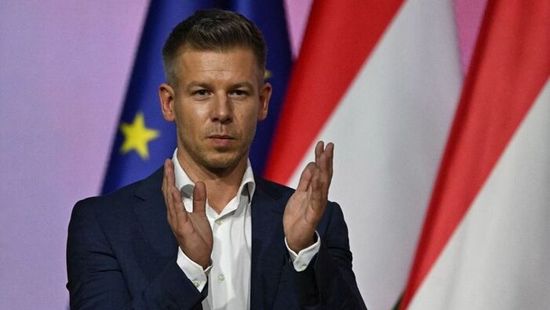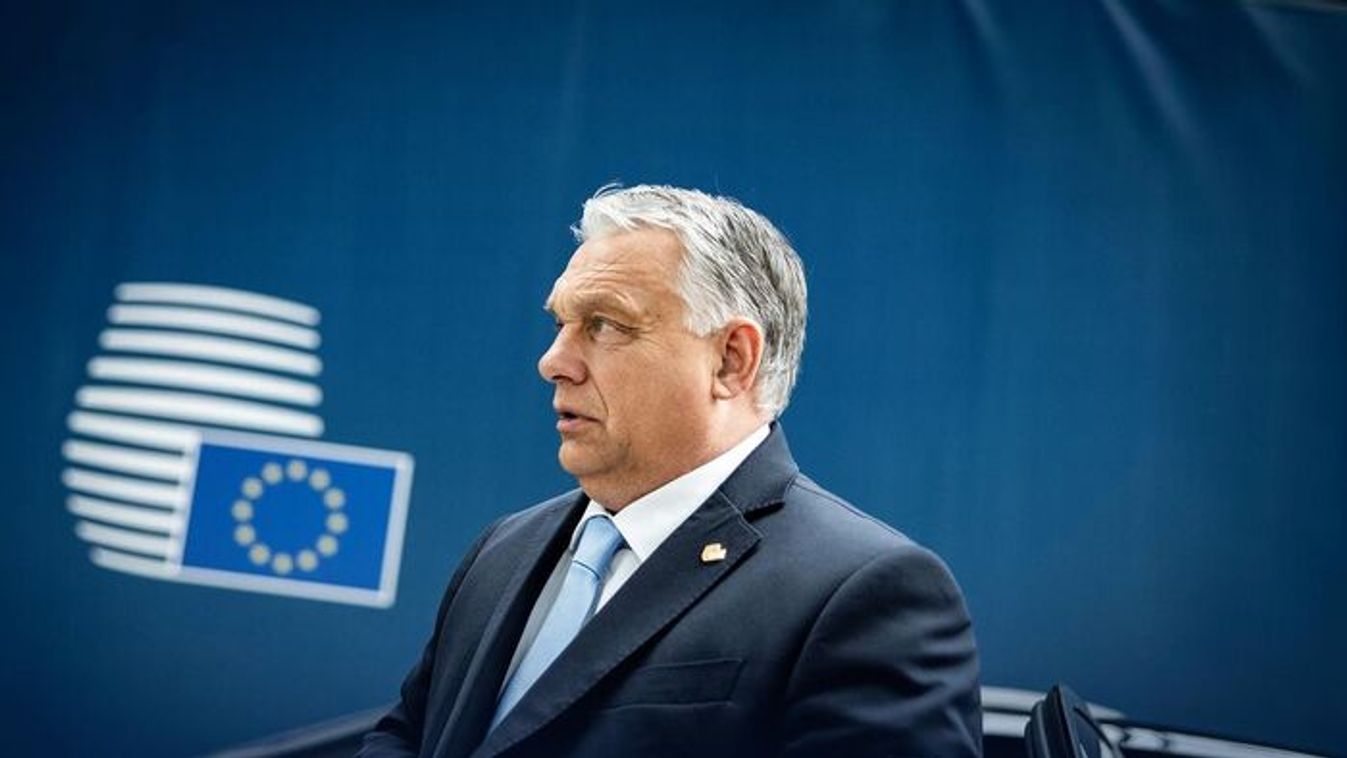A vörös vonal határán: veszélyes hónapok következnek, Magyar Péter terve nem hagy kérdőjelet

Történelmi időszak következik Európa életében, nagyon nem mindegy, hogy ki fogja vezetni Magyarországot 2026 után.

There's often a morsel of truth in what former US Ambassador to Hungary Eleni Kounalakis says. For example, as she writes in her recent New York Times Op-Ed that on August 27th, the Austrian police did really find a freight truck on the highway to Vienna carrying 71 dead people. Sadly, this is the only point that Mrs. Kounalakis got right. Let's see, what really happened, why it happened and if it really has anything to do with Hungary or the Hungarian past.
When Mrs. Eleni Kounalakis speaks up, there's often a morsel of truth in what she says. I know because between 2010 and 2013, when she was US ambassador to Budapest, I had the pleasure of being a regular guest at her popular dinners and parties. They were always great fun.
On many of these occasions, I had the opportunity to talk to Mrs. Kounalakis about politics in the United States and in Hungary, but I'll never forget one of the conversations we had at her official residence when I pointed at the wall and asked:

"Are they original?"
Before me, several Andy Warhol paintings hung on the wall. "Yes," she replied with a polite smile, explaining that the room was too dark because of the high trees in front of the windows, so she wanted something really colorful and happy. That's why she selected the Warhols.
So practical. Original Warhols against the darkness.
I have to admit, they worked really well. Unfortunately, Mrs. Kounalakis is not as effective in fighting the darkness with her writing.
Take for example her piece recently published in The New York Times entitled "Hungary's Xenophobic Response".
Let's have a look at the most sensational part.
"Recently, Austrian authorities found a freight truck abandoned by human traffickers along the highway from Budapest to Vienna, in which 71 refugees died of asphyxiation. When I saw the images, I couldn’t help thinking of the cattle cars used to deport 440,000 Hungarian Jews to Nazi death camps in World War II. It was a chilling reminder of Hungary’s, and Europe’s, tumultuous pasts."
As I already mentioned, there's always at least a morsel of truth in what Mrs. Kounalakis says. On 27th August the Austrian police did indeed find a freight truck on the highway to Vienna carrying 71 people that had suffocated to death.
Sadly, this is the only point that Mrs. Kounalakis got right.
Let's see what really happened, why it happened and if it has anything to do with Hungary or the Hungarian past.
After the dead bodies were discovered, the Austrian and Hungarian police opened an investigation and within days four people were arrested, one Afghan and three Bulgarian citizens. Among them was the truck owner himself, a Lebanese-born Bulgarian citizen. People smugglers, in short. They get paid by the migrants who want to get to Germany quickly, and though it's illegal to smuggle people who don't have any documents, they don't risk much. Normally, trucks do not undergo checks at the borders within the EU's Schengen Area. Perhaps another important detail: none of the smugglers was Hungarian.
But even if there were a Hungarian among them, what would be the connection between the crime and the Hungarian state or the Hungarian government? Nothing. Except that the Hungarian authorities helped to find the smugglers, who took part in killing 71 innocent, mostly Syrian refugees.
So, this is the situation and Her Excellency's outrageous response to that.
But let's go further.
Mrs. Kounalakis criticizes the Hungarian government for building a fence on the southern border, the border with Serbia. This is interesting coming from a former American diplomat, a fundraiser for the Democratic Party and a key figure in Hillary Clinton's camp. Unless I'm mistaken, the US itself has built a fence on its border with Mexico to curb illegal immigration. Hungary is doing the same thing. What's the problem then? And it's not defending only Hungarian territory. The Hungarian-Serbian border is the external border of the EU's Schengen Area (Serbia is not yet a member of the EU). The Hungarian government has a responsibility to protect it.
But why is such a fence needed these days? Mrs. Kounalakis' answer: the Hungarian government is xenophobic. That's nonsense. Let's have a look at the facts related to the migration crisis affecting Hungary.
In 2012, the last year before the migration crisis began, 140,000 non-Hungarian citizens were living and working in this country of 10 million inhabitants. They came legally, studied at the universities, or found work. You see them all over Budapest: Chinese bars, Turkish restaurants, Syrian cafés, Egyptian doctors, etc. Only about 1,500 asylum seekers entered Hungary in 2013, ten percent of them were granted asylum and stayed. Hungarians did not oppose it, nor did the government. There are also two, small minority communities of Muslims in Hungary, and a lot of Muslim students. Consider this:
"Mostly foreign, religious students who do not know where to practice their religion. They pay pretty heavily, there is a rural university town that practically lives off of students from the Arab world", so the proposal to build a mosque for them should be "formally discussed". Who said that? Viktor Orbán, the allegedly xenophobic prime minister of Hungary. The quote is from May of this year.
So there's always been a legal way to immigrate to Hungary and make it one's home, but this year, as of August, 110,000 asylum seekers have entered the country.
The vast majority of those have crossed the border illegally. By the end of this year, the number will be at least more than a hundred times the amount Hungary has had in the past. Do these migrants want to stay and make a living in Hungary? No, 90 percent of them want to move on to Germany or Sweden. Thinking, hoping, they can stay there. Those are high hopes. Contrary to what Mrs. Kounalakis claims, the Germans are not willing to take everyone. Two-thirds of those who request asylum in Germany are expelled. The chancellor, Angela Merkel seems to change her position every other day. When she's talking about openness, about "Willkommenskultur", it results in more and more migrants not willing to cooperate with the Hungarian authorities. They just want to go to Mama Merkel, no matter how. Maybe, tragically, even by freight truck.
It's not that there were no refugee camps in Hungary. There are. Even new ones. They offer food and a warm place to stay. The camps are, in fact, open. Nobody is forced to stay there. So they go. Why did Hungary not let them go easily then? Because of the so called Dublin Regulation, an EU-law that says that every migrant should be registered in the EU country first entered. So, it's Hungary's duty to register them. The problem is with the other part of the Dublin Regulation: if they are registered in Hungary and then go on to Germany or any other EU country without permission and that country doesn't want them, they have the right to send them back to the country where they were registered.
Mrs. Kounalakis claims that the Hungarian government uses the crisis for political gain. That's true. (Another morsel.) The billboards she writes about really exist - and are disgusting. To my taste, at least. These kinds of political tactics may not be entirely unfamiliar to Mrs. Kounalakis, however.
They come from the United States, from a man named Arthur J. Finkelstein who has advised Nixon, Reagan and Pataki - and advises Orbán these days. So the communication to the domestic audience to reap some political benefit is part of the story – but not the main part.
The fact is: the Hungarian government doesn't believe in the utopia and ideology of multiculturalism. What might be working for the US, may not work for Europe. A country of 10 million people cannot risk a situation where hundreds of thousands, or millions, overrun its territory. People mostly of a very different culture, religion and language. Is this xenophobia? I don't think so. Common sense, maybe.
By the way, let's see, how many Syrian refugees the US took this year? 1500! The biggest economic power on Earth, which has played a role in the outbreak of this migration crisis – contrary to Hungary.
Of course, I don't want Mrs. Kounalakis to trouble herself with the US's resposibility. I know it would be too hard in times of an electoral campaign.
Let me only make a kind suggestion: stick with the Warhols!